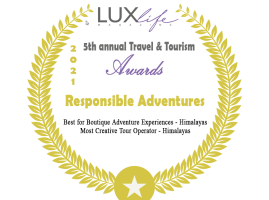Pilgrimage sites of Nepal
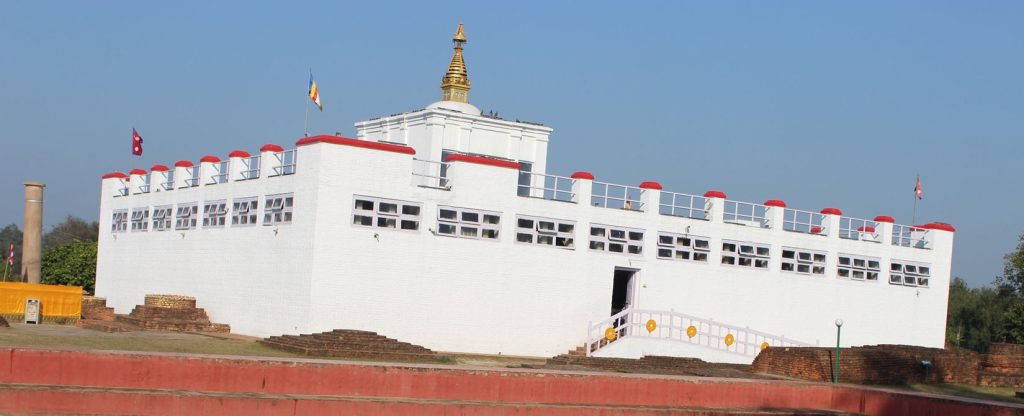
Pilgrimage Sites of Nepal Nepal is known for its natural beauty and a melting pot of two of the world’s oldest religions – Buddhism and Hinduism. Some of the most ancient religious sites exist here with a history that dates back to several thousand years. Buddhists and Hindu pilgrims come to find salvation in these holy sites. Some of these sacred sites are set amongst breathtaking views of the snow-capped Himalayan peaks, which involve trekking along deep valleys. It can be an out-of-this-world experience that is both physically and spiritually rewarding. Nepal is a land steeped in mythology and legends. It is home to numerous Buddhist and Hindu pilgrimage sites. The Himalayas have always been considered the abode of gods. The Hindu scripture Skanda Purana cites, ” In a hundred ages of the gods, I cannot explain the glories of the Himalaya to thee.” It is also said that the Himalayas’ sight cleanses the sins of humankind while the morning dew is dried up by the morning sun. The Hindu pilgrimage sites have been divided into four sections known as Char Dham ( Four Abodes), Pashupati Chettra, Mukti Chettra, Ruru Chettra, and Baraha Chettra. These abodes are spread in different parts of the country in all four directions; East, West, North, and South. Similarly, the devotees of Vishnu, Shiva, and Kali or Bhagawati, known as Vaishnava, Shaiva, and Shakti, go to the respective shrines to worship. The Hindus and Buddhists have lived side by side in harmony for a few thousand years. Numerous temples, shrines, and monasteries are sacred to Buddhists and Hindus. Pashupatinath Temple is considered the holiest for the Hindus in Nepal. Lumbini, the birthplace of Lord Buddha, is located in the Terai region South West of Kathmandu. It is considered one of the most sacred places for Buddhists. The Temple of Muktinath is situated in the trans-Himalayan district of Mustang. It is dedicated to Lord Vishnu and Avalokiteshwar; Buddhists and Hindus revere this site. Several monasteries and caves where Padmasambhava or Guru Rimpoche are believed to have meditated before introducing Tantric Buddhism to Tibet. Gosainkunda Lake is tucked away in a serene location in the Langtang region at 4380 m and is dedicated to Lord Shiva. There are Bonpo monasteries in the Mustang and Dolpo districts of Nepal. Bonpo predates Hinduism and Buddhism. It is a practice of animism and shamanism. The temples, monasteries, shrines, and lakes are flocked by many pilgrims on specific religious festivals and occasions. For example, the Temple of Pashupatinath draws hundreds of thousands of pilgrims from Nepal and India during the Shivaratri Festival. The Pashupatinath temple and two Buddhist stupas, Swayambhunath, Boudhanath, and Lumbini, are UNESCO World Heritage sites.
The People Of Sikkim their culture and religions

The People Of Sikkim have their culture and religions. Sikkim has a blend of diverse communities, cultures, religions, and customs. Sikkim is an excellent example of harmonious living between people from different areas and regions. The people of Sikkim are known as Sikkimese. The leading communities in Sikkim are the Lepchas, Bhutias, and Nepalese. However, some Plainsmen have settled here, as they own businesses in the urban areas and are in government service. Sikkim’s development with roads, bridges, buildings, and hydropower saw an influx of migrant labourers from the plains and Nepal. We will be discussing the three cultural communities and their lifestyles. The Lepchas The Lepchas are believed to be the original inhabitants of Sikkim. They resided in Sikkim long before the migration of Bhutias and Nepalese. The Lepchas’ original religion was of the Mune or bone faith, similar to pagans. They used to worship spirits of the mountains, rivers, and forests. Later on, they converted to Buddhism and Christianity. The earlier religion could explain why these people prefer to live in a healthy environment. The Lepchas form only 13% of Sikkim’s total population; they are concentrated in Sikkim’s central part. The prominent places of the Lepchas are Lachen, Lachung River valleys, and Dickchu valley. They lead an honest life. The men wear a dress known as Pagi, a cotton dress in strips. The women wear a two-piece dress. They speak the “Lepcha” language, which isn’t widely used. They are very good at archery. The Bhutias The Bhutias are people of Tibetan origin. These people migrated to Sikkim sometime during the 15h century from the Kham province in East Tibet. They mostly populate the Northern part of Sikkim. They speak the “Sikkimese” language, which is from the Tibeto Burman group. The Bhutia population dominates in large numbers in the villages, compared to the Lepchas. The Bhutia houses are rectangular and are called “Khin” in their language. The men’s traditional dress is called “Bakhu,” a loose cloak of a garment with full sleeves. The women folk wear a silk blouse called a “Honju” inside a loose gown type garment. The garment can be cotton, silk, or brocade. Sikkim has incorporated the Bhutias’ religion. They constitute about 16% of the total population of Sikkim. The Bhutias regard priesthood as both their academic as well as spiritual choice. The Nepalese The Nepalese came into Sikkim long after the Lepchas and Bhutias. They migrated to Sikkim in hordes and rapidly emerged as the leading community. The Nepalese constitute 67% of the total population of Sikkim. They started terrace farming in the state. The Nepalese community began cardamom, a critical cash crop cultivation. The Nepalese are divided into castes for the Hindus, such as Brahmins, Chettris, Damai, Kami, and Sarki, while other ethnic groups such as Gurungs, Tamangs, Rais, Limbus, and Magars have their clans and sub-clans. Most of this population practice Hinduism, while the rest practise Buddhism in some ethnic groups. They speak the Khas language, somewhat similar to Hindi and are understood and communicated throughout Sikkim. The men wear a traditional dress consisting of a long double-breasted tunic below the waist known as Daura and a long pair of trousers known as Suruwal. The women’s traditional clothing comprises a double-breasted blouse known as “Chou Bandi Cholo” and either a saree or sarong; they often use a shawl to wrap themselves. Check out our Trekking packages for Nepal, Bhutan, India, and Tibet.
The People Of Darjeeling, their culture and religions
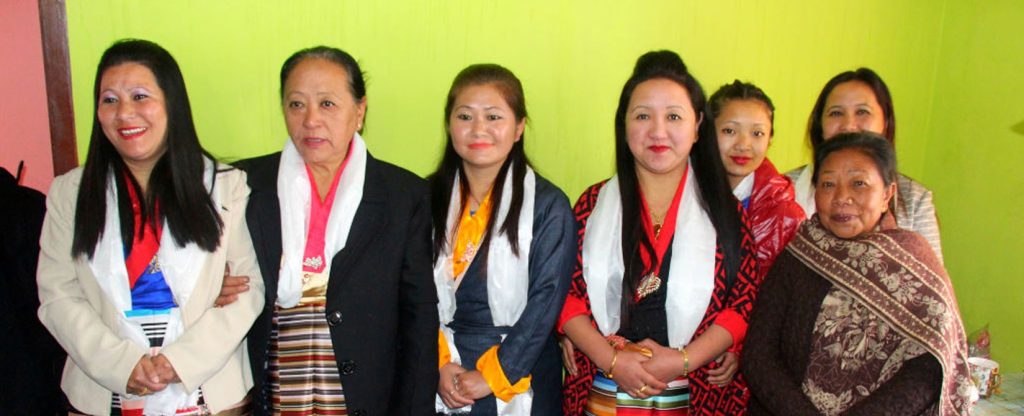
The People Of Darjeeling, their culture and religions. The Lepchas and Rongpas (people from the lower elevations) were the Darjeeling Hills’ original inhabitants. They are Tibeto Burman in appearance, although their origin is obscure. The higher population of the people in the Hills is The Gorkhas. They are industrious, enterprising, and speak several languages/dialects. They join the British and Indian armies as a career. They are short with oriental features of Nepalese origin and are known for their bravery, just like their cousins from Nepal who are well known the world over. Several of them have been decorated with the Victoria Cross – the highest award in the United Kingdom. The Gurkha’s Khukuri is a well-known weapon. Amongst the Nepalese population of Darjeeling is also the Sherpas. They are renowned for their courage, surefooted, and skills at high altitudes. They have made immeasurable contributions to mountaineering in the Himalayas. The other ethnic groups are The Newars, Tibetans, Bhutias, Sikkimese Bhutia, Dukpas, and Bengalis. Nepali Folk dances The Nepalese have a rich folk culture. The hills and valleys are a treasure house of songs and dances of the hill folk. They are a very musical lot with a lyrical, rhythmic mind and heart that doesn’t hesitate to break into a song and dance when the moment to celebrate arises. Their environment, consisting of the Majestic Himalayan Peaks, lush green hills, forests, and valleys, has influenced their religion, including folk songs and dances. The two major religions of Hinduism and Buddhism appear to have shaped the Nepali culture of its vibrant folk songs and dances to live side by side. The Nepalese folk songs and dances are influenced by ancient cave paintings, religious rites, and devotional songs. An Early form of dances and folk songs was attributed to the god, goddesses, and Hindu and Buddhist religions’ deities. These songs and dances were impressions of sacred dances performed to appease the deities and ward off evil spirits. Languages The dominant languages in Darjeeling are Nepali, Hindi, Bengali, and English. Bengali is the state language of the plains. Refugees and some other tribal people speak Tibetan. Religions Hinduism, Buddhism, Christianity, and to some extent, some Islam remain the predominant religions of Darjeeling. Food and Drinks You can pamper your taste buds with exotic but homely food and discover a mosaic of cultural delicacies while satiating your gastronomical needs. Whether it is the ubiquitous momo or thukpa, whose fabled taste has transcended across the Himalayas along with the migrant Tibetans, or the dishes with lemongrass from south-east Asia, Darjeeling has the best to offer you. Momo Momo is meat dumplings, either steamed, pan-fried, or deep-fried, accompanied by a bowl of clear soup and achaar (spicy sauce). One can also order vegetable momo, where cabbage and other vegetables replace the meat. Thupka Tibetan noodle soup consists of mixed with egg/meat and vegetables. Shyaphalay Shyaphalay is Tibetan bread that is stuffed with meat and deep-fried. It is served with a spicy sauce to dip in. Aludum This potato dish is an adaptation of the Indian recipe, and now the residents of Darjeeling can’t live without it. Tibetan tea It is made from tea leaves, brick, salt, and butter and churned to mix it well. Well-made butter tea can taste like soup. Tongba Tongba is made from fermented millet that is put inside bamboo. Hot water is poured into the bamboo container, and the liquid is sipped through a bamboo straw after a few minutes. It is a favourite amongst many during the cold winter evenings. Festivals The major festivals celebrated by the people of Darjeeling are Durga Puja, Deepavali, Saraswati Puja, and Shivaratri. The houses are decorated with lights, and the spirits are high during the Deepavali festival. It lasts for several days, consisting of a day to observe/worship crows, dogs, cows, and ox, followed by Laxmi (goddess of wealth), Puja and bhailo, and deusi (a form of Carolling). Then, groups go house to house and perform songs and dances from a few minutes to a couple of hours, depending on how important the house owner is in the community. Finally, the homeowners place a tray of delicacies and money to thank the performers, and the performers appreciate and wish the best to the hosts. The Lepchas and Bhutias celebrate New Year in January, while the Tibetans, Sherpas, and other Buddhists celebrate their lunar new year with masked dances at the monasteries. The festival falls between February and March. In addition, the Tibetans celebrate His Holiness, The Dalai Lama’s birthday with much fanfare in mid-June annually.
A new minister of Culture, Tourism and Civil aviation appointed
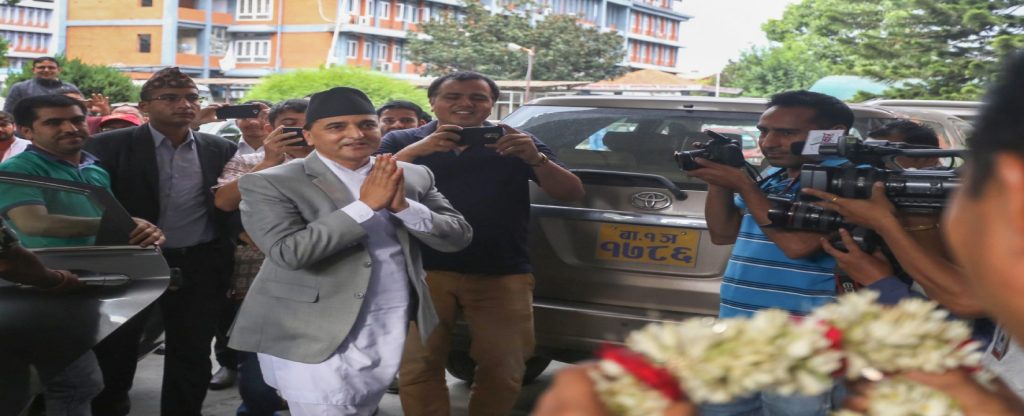
A new minister of Culture, Tourism, and Civil aviation was appointed. The vacant administration leadership at the Ministry of Culture, Tourism, and Civil aviation were appointed after the then tourism minister Rabindra Adhikari’s unfortunate death in February 2019. After five months after the then minister’s demise, Mr Yogesh Bhattarai was named the new Tourism minister. Mr Bhattarai’s appointment has come when building different airport projects. In addition, the “Visit Nepal Year 2020” tourism drive arrangement has stagnated; furthermore, the national carrier – Nepal airline corporation- has been struggling financially for survival. In these circumstances, two journalists of a reputed English daily – The Himalayan Times (THT), caught up with the tourism minister to learn how he intends to address these concerns and push the country’s tourism sector. Photo: Naresh Shrestha/ THT THT: You have been selected as the tourism minister at a critical period when the nation is grappling with accomplishing its tourism aims. What will be your topmost priorities? Tourism Minister (TM): I am taking notes of all data currently associated with developing the ministry’s schemes and other obstacles in the nation’s tourism sector. We will develop a one-year work plan as soon as I gather crucial details on the current developments and hurdles from relevant bureaus, including the ministry. Presently the tourism sector contributes only seven per cent to the country’s GDP, while it has received nearly 1.2 million tourists. This is certainly unacceptable. The tourism sector can be indispensable in reducing inequality economically, achieving sustainable growth, and promoting entrepreneurship. In addition, the tourism industry is significant in strengthening Nepal’s bilateral relations with different countries and reducing gender and social inequalities. Therefore the tourism industry has to be under the government’s planned preference. THT: What is your evaluation of the present difficulties facing the ‘country’s tourism sector? Tourism Minister: There are immense obstacles. Fundamentally, the lack of a good and quality tourism foundation has always been the principal bottleneck for tourism trade growth. Likewise, the country’s tourism database and information movement are limited. As a result, we have not been able to generate enough tourism products while the existing products lack important branding and promotion on the international market with unique selling points. There is an urgent need to efficiently prepare all diplomatic agencies that Nepal has in various countries to market Nepal’s tourism sector. Alongside this, the government offices and the private sector need to be mobilized efficiently. It is also evident that the tourism sector has not received the excellent precedence it deserves. This will not occur during my tenure. THT: Despite the nation commemorating 2020 as the “Visit Nepal year” to market tourism, the tourism fraternity appears unhappy with the preparations. How convinced are you? Tourism Minister: It is true that the arrangements for the tourism campaign are slack and have not attained the level they should have. One of the reasons behind this setback was the absence of political leadership at the ministry for the past five months. However, the department will now work on extra programs and packages to target the Visit Nepal Year 2020 campaign. All the programs will promote the nation’s tourism globally while coordinating with international media to promote Nepal’s tourism further. Coordination with other globally distinguished tourism agencies and governments of different nations will make Visit Nepal 2020 a grand success. THT: The national flag carrier – Nepal Airlines Corporation (NAC)- is vital in promoting tourism. However, it has been grappling financially for the past few years. How do you plan for NAC to step up? Tourism Minister: We have no option but to step up our national flag carrier’s strength. We need to address the predicaments it is currently facing as Nepal Airlines, and its services are directly linked to Nepal’s identity. Therefore, the initial step towards strengthening the national carrier will be to analyze the difficulties it has faced in recent years. A research panel will be formed by me, whose job will be to recognize issues hindering NAC’s growth. Numerous studies have already been carried out concerning ‘NAC’s failure to operate as a competitive government bureau. Accordingly, the government will make necessary decisions concerning NAC’s operation modality based on the past report’s findings prepared under my leadership. According to recommendations and necessity, we can either restructure NAC’s administration, bring in a strategic partner, or even appoint a corporation’s management partner. Any modality adopted for NAC will have to be result-oriented, and this factor will be kept in mind when making any decision. Nepal Airlines Corporation has been supported financially by the government, but this trend must be stopped and made self-sustainable. Minister Bhattarai claimed that he was optimistic that NAC’s predicament would rapidly improve its financial state, services, and management. THT: How do you intend to approach the European ‘Union’s embargo on Nepalese airlines? Tourism Minister: Unfortunately, the EU has continued to embargo Nepalese airlines. Nepal has maintained strong bilateral relations with countries in the EU. Additionally, the United Kingdom, France, and Germany, among other Eu nations, have been those Nepal’s embassy for decades. Consequently, Nepal will continue to strengthen its relationship with EU nations. One of the essimportantys to do so would be lifting the ICAO-imposed ban on Nepalese airlines, allowing them to expand their flights to EU countries. I will work hard toward addressing all the concerns and questions raised by the EU during my tenure in the aviation sector. Moreover, my importance will be to get the ban imposed by the EU lifted. Minister Bhattarai said, “Moreover, my emphasis will be to lift the ban imposed by the EU on Nepal airlines by addressing their pressing matters through discussions and consultations with the EU and other stakeholders. THT: The completion deadline of Gautama Buddha International Airport (GBIA) has been extended repeatedly. How positive are you that the new completion deadline of the GBIA in December will be met? Moreover, the necessary groundwork related to new air routes and flight operations has not yet been finalized at the airport. Minister Bhattarai: The government has
Travel Updates Nepal
Nepal Travel Updates Almost 18 months have elapsed since the massive earthquakes of April, and May 2015 struck Nepal and brought about significant mayhem then. Back then and in the immediate aftermath, the world was under the impression that all of Nepal was flattened. The fact is, only 14 out of the 75 districts were affected by the earthquakes. Several historical monuments were destroyed or partially damaged. Restoration work is in progress at many of these UNESCO heritage sites. Boudhanath Stupa restoration is reported to be completed six months before the schedule. The effects of the earthquakes were shattering the tourism industry. Foreign offices warned their citizens to avoid unnecessary travel to Nepal. As a result, the visitor arrival dropped by two-thirds for the first 8 to 10 months post-earthquake. Just as the Nepalese people were recovering from the damages brought about by the earthquakes, an unofficial trade embargo at the borders with India brought more difficulties to the nation, bringing all economic activities to a grinding halt. On the positive side, although there was no denying the hardships brought about by the earthquakes and the Indian border impasse, it was a pleasant surprise and relief that few braved to visit Nepal to discover a different side of the Nepalese story. The story of the resilience of Nepalese people. All Western countries, including the USA, UK, Australia, Germany, Denmark, and Norway, have removed the travel warning to Nepal, deeming it safe for a visit. 37 Countries have officially listed trekking trails reopened for hiking after extensive safety checks and repairs. Many tourism stakeholders were poorly affected; some were on the verge of bankruptcy. Fortunately, everyone stood steadfast in supporting and encouraging one another. Several events and meetings were held on reviving tourism and promoting visitors to the country with messages that Nepal is safe again. In the meantime, domestic tourism was encouraged, and it was a significant success in helping sustain the entrepreneurs in the travel trade business. Optimism is high in the air amongst tourism entrepreneurs. New Hotels are under construction, new restaurants are sprouting up, and more investments are made in other tourism infrastructures. Boutique hotels are springing up in the main cities of Kathmandu and Pokhara. There are reports on blog papers, magazines, and posts on Social media about how the travel inquiries are gaining momentum again – all positive signs of improvement. The autumn season is believed to be the busiest period for Nepal. However, if the tourist arrivals increased by 13% in the first six months of this year, the tourism industry stakeholders are optimistic that better days are just around the corner. Now the visitors can once again enjoy our World Heritage sites, diverse cultures, and numerous adventure activities such as mountain biking, rafting, kayaking, canyoning, paragliding, ultra-lite flights, zip line, mountaineering, and hiking in the world-class trekking trails in the Himalayas and Kathmandu Valley’s prized sites. Your visit to Nepal means contributing to the tourism industry’s speedy recovery after the natural disaster. Check out our Trekking packages for Nepal, Bhutan, India, and Tibet.
Nar Phu trek during the spring season
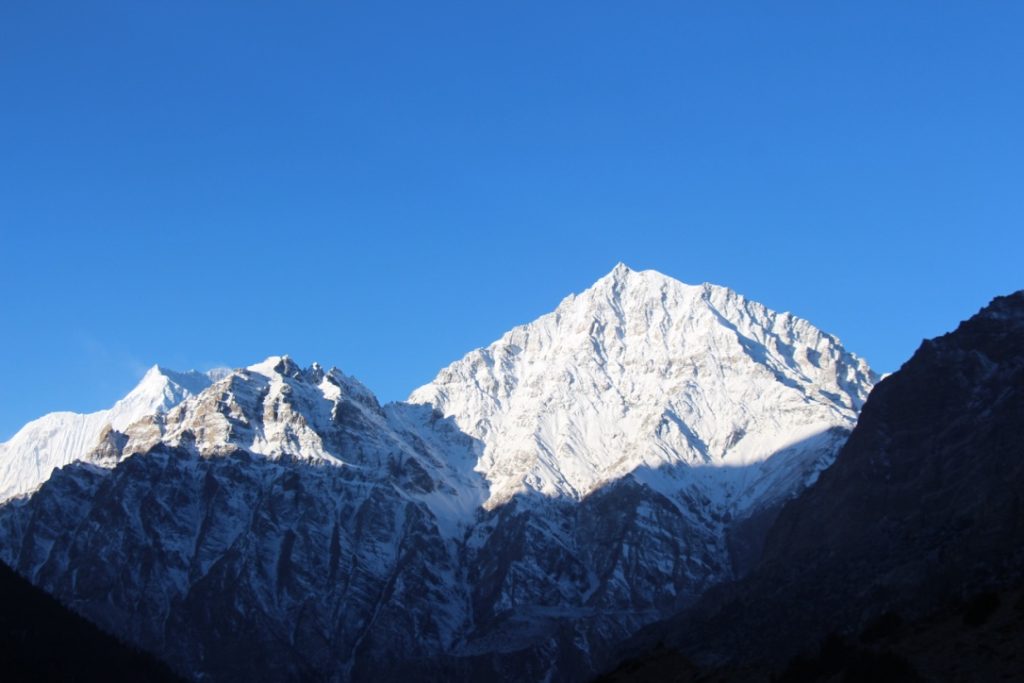
Nar Phu Trek during March/spring season Nar and Phu Valleys are located in a remote part of the Manang district on the Annapurna Range’s Northside. It is in what the Nepalese government calls the “Restricted Area,” where special permits are required and obtained by bonafide Trekking agencies of Nepal. This area was opened to foreigners in 2003. The trek’s duration depends on the trekking group’s time and fitness level, opening up a few options. It’s time for the actual trekking part. If you have plenty of time between 3-4 weeks, you can choose to drive to Besisahar and start your trek to Koto on the main Annapurna Circuit trail. The hike takes four days to get to Koto. Then, you branch north to the restricted area of Nar and Phu from Koto. You can come out of the “restricted area” via the more challenging and higher way via Kang La pass 5360m to Ngawal on the Annapurna Circuit trail or retrace your steps back to Koto. If time is not a problem, you can continue towards Tilicho Lake and go over the Thorung La pass to Pokhara. Otherwise, you can take a jeep from either Ngawal or Koto (depending on your itinerary’s choice) back to Besisahar and return to Kathmandu. Our group from Singapore had a short time to do this trek, so we did the quickest and safest possible itinerary for them. Here is an article about the Nar Phu trek we conducted for our Singaporean Group. Style of Trekking – Camping. Our trek to Nar Phu valley was going to be an entirely supported expedition-style camping trek. A camping trek requires many logistics as all camping equipment, food, and provisions must be reorganized and carried throughout the trekking trip. Why do a camping trekking tour The Nar Phu valley trekking area is newly opened and isn’t as developed with lodges/teahouses as the Annapurna, Langtang, and Everest regions. One has to be very fit to do a lodge trek in this area as the distances between villages are far, especially during the early spring. Most villagers wouldn’t have returned from the warmer lowlands to avoid the harsh winter. Camping trek is a better option if you part of a larger group – 4 or more persons as some village lodges have only two rooms for trekkers. In addition, a camping trek gives your group flexibility, e.g., if some people in your group are not as fit or not well, your team can set up camp before the predestined location provided they find a suitable campsite. The support team. We had a team of a Trek leader (yours truly), three assistants’ guides, a trekking chef, three kitchen assistants for the chef, 12 mules, and a mule driver for a group of 9 trekkers for a 10-day trip. Day 1) Our group from Singapore arrived in the afternoon. There were met at the airport and brought to their hotel for the pre-trek briefing. We met at the hotel lobby at an agreed time to go for dinner. We finished our meal and parted ways to rest due to their very early start to the day. Day 2) Despite being on a tight schedule, we had to keep this extra day in Kathmandu as the Department of Immigration requires the original passports for the restricted area permit. While the trekking permit was being organized, the group went on a walking tour of Swayambhunath Stupa and walked through the back streets of Kathmandu into Basantapur Durbar Square – a World Heritage site before heading back to Thamel, the tourist district, for lunch. Once we ordered our lunch, the group was briefed on the journey’s timing the next day, what to expect on the trek, how our team delivered our service, etc. The trip briefing is done to save time while waiting for the meal to arrive. Our permits were issued by the end of our lunch. After that, we parted ways so everyone could return to final repacking for the trek as we had a very early departure. Day 3) We had requested an early buffet breakfast at the hotel as we had two sections of driving for the day, which could take anywhere between 12-14 hours. While the group had breakfast, our staff loaded their trekking kitbags onto the van doing the journey’s first leg. The first part of the trip was to Besisahar – a mere 145km drive, but the winding road took 5 hours to reach. After that, we were to change vehicles and get into three jeeps for the rough track to Koto. The automobiles got loaded up while the group had lunch at Besisahar. It was a very tight squeeze with our nine trekkers, nine support crew, our camping gear, and food. Our team had left for Besisahar the previous day as they had to shop for fresh fruits and vegetables and organize the packing. We arrived at Koto after dark at 7.30 p.m. The drive is very scenic, but the rough road is bone-jarring. However, the local drivers say the more load the jeeps have, the less bumpy the ride is due to the weight. We had another early night after dinner at the lodge. The Nar Phu Trekking begins. Day 4) We had ordered our breakfast the previous night to save time the following morning. We woke up to beautiful views of Annapurna II and Lamjung Himal. We had to check in with the police post with our special permits before entering the Nar Phu Valley. We left the Marshyangdi Valley a short hike later and joined the Nar River Valley. The walk is along a wooded area with a combination of an undulating trail but gently gaining altitude. We had started at 2600 meters, and our camp was going to be at 3200 meters. Most people head for the village of Meta at 3560 m, but we had planned to end our day two hours before that at Dharmashala (a resting place for travellers).
Mount Everest to be cleaned up of garbage and corpses
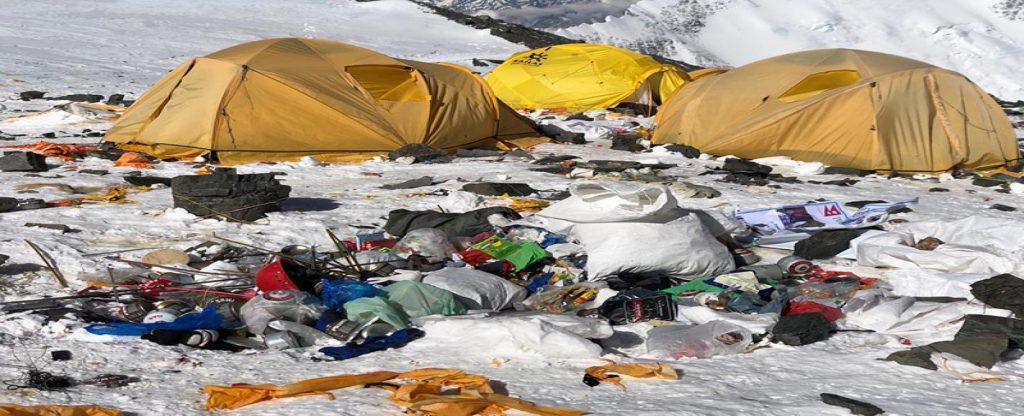
Mount Everest to be cleaned up of garbage and corpses. To keep the world’s highest mountain clean, Nepali Mountaineering expedition operators are ready to launch a joint effort, a massive drive to clean Mount Everest this spring season of 2019. The combined initiative, which the government and non-government agencies plan, intends to collect dead bodies and trash left behind by the climbers from the South Col-Camp 4 and Camp two of Mount Everest. Mountaineers have long been treating Everest as a dumping ground by abandoning oxygen bottles, cans, ladders, wrappers, faeces, and bags filled with faecal matters in the higher camps. The worst affected areas are the South Col at 7900 meters and Camp two at 6500 meters every year during the spring climbing season. As a result, it has been estimated that more than three hundred bodies of climbers are left behind. The base camp will be established by the third week of April when the stakeholders plan to start this colossal event. There will be two groups of assigned Sherpas consisting of five members each. They will be deployed at Camp two and the South Col to collect and pack the trash. The climbers, along with their support crew who rotate to Camp two and South Col to acclimatize, will bring the packed rubbish to the base camp. Those who bring down the trash will be rewarded financially. The Department of Tourism has estimated that around 500 foreign climbers and more than 1000 climbing crews will be visiting the higher camps on Everest this season while preparing to scale the highest peak and Mount Lhotse 8501 m, the fourth highest mountain in the world. The Department of Tourism’s record shows that more than three hundred foreign climbers, along with their support crew, have left for the Khumbu region on their attempt to climb Mount Everest and Lhotse. Most of the Mountaineers make a final push for the summit in the third week of May. The Department of Tourism’s Director General Dandu Raj Ghimire claimed that it will be the largest ever cleaning campaign on Everest during a press conference. He said, “We expect to bring hundreds of tonnes of garbage from the higher camps on the mountain this season,” encouraging the climbers from the world over to join in on this noble cause to clean up Everest. The government has been unsuccessful in implementing it is 2014 mountaineering rule, which states that every member of an expedition team has to bring back at least eight kilograms of garbage besides their trash from expeditions on Mount Everest, Lhotse, and Nuptse; many commercial expeditions have left behind tonnes of waste all over the mountain. “However, this upcoming event should be successful,” Ghimire wishes. Ministry of Culture, Tourism and Civil aviation, Environment, Nepal mountaineering association, Nepal army, Khumbu Pasang Lhamu rural municipality, Sagarmatha Pollution Control Committee and Nepal Tourism Board have decided to take an active role in this campaign. Tika Ram Gurung, the Nepal Mountaineering Association secretary, hopes that most high-altitude support staff who bring loads to the higher camps will responsibly descend with the garbage. “They will not be just making extra income but contributing in a big way towards this noble cause,” he said. The price per kilo of garbage brought down is yet to be determined and is currently in discussion. The estimated cost for this campaign is Rs3 million. This campaign is funded by several sponsors, such as The Coca-Cola Company, the World Wildlife Fund, financial institutions, and private businesses. The Chairman of the Sagarmatha Pollution Control Committee (SPCC), Ang Dorje Sherpa said, “This campaign will be continued in the years to come”; he also said that this campaign would be facilitated at least two ‘icefall doctors’ in the higher camps. “SPCC will be monitoring the activities of this campaign from base camp,” he said. “Non-biodegradable garbage will be flown back to Kathmandu.” Dambar Parajuli, the Expedition Operators Association of Nepal ( EOAN) president, said that EOAN would back the campaign. “All climbers will happily contribute,” he added. Check out our Trekking packages for Nepal, Bhutan, India, and Tibet.
An epic adventure of Mardi Himal Trek and paragliding to Pokhara
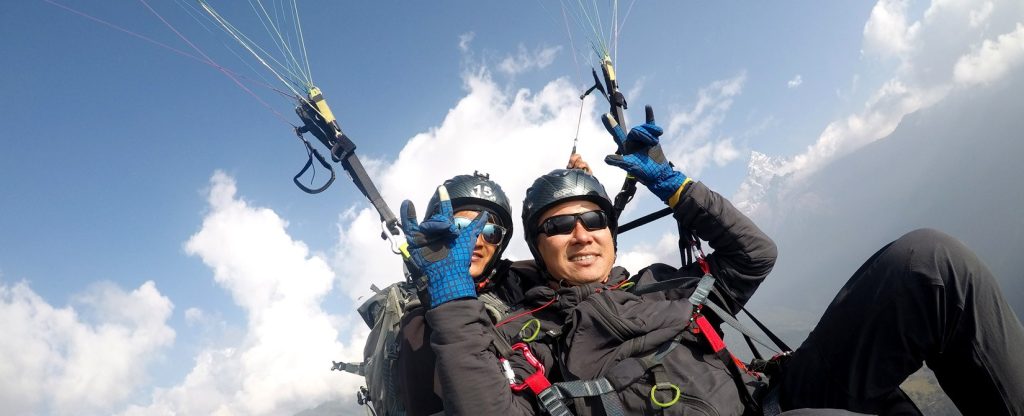
An Epic Adventure – Mardi Himal Trek and Paragliding down to Pokhara In October 2015, my good friend Babu and I sat in Pokhara – a town West of Kathmandu, to discuss joining hands to offer an epic adventure of trekking on the Mardi Himal route and taking off from 3500 meters or higher if the weather allowed. It is an innovative epic adventure, providing another unique experience for our esteemed customers. I was approached by some keen Nepalese youths with a thirst for unique adventures some 18 months ago and again in early November 2018 while I was leading another tailor-made Ghorepani to Jhinu danda trek. It took some organizing amidst some obstacles, such as being between two major Hindu festivals and a world accuracy paragliding championship taking place simultaneously. However, everything was finally sorted out after several days of frantic phone calls. Mardi Himal trekking route has been used as a high-altitude training flight for new pilots, but a commercial tandem flight for a group was probably the first time, at least for Nepalese clients. There were six interested, but two had to return to their hometowns to get back to their businesses due to time constraints. I met all six at Pitam Deurali on the 11th morning, having flown to Pokhara from Kathmandu the previous day. The two who had to return bid farewell to the five of us going on this epic journey. We had planned to trek for three days to high camp instead of two to give them time to acclimatize well; most importantly, the weather forecast would be cloudy for the first three days and clear on the 15th of November. Trek to Forest camp 2465 meters. We trekked amidst lush forest on the first day we got together – the team had arrived at the Australian camp two days prior and had hiked to Pitam Deurali the previous day. There were a lot more Nepalese trekkers than those from overseas. We soon learned that Dashain and Tihar’s holiday period is very busy with the newly adventurous Nepalese. It was good that I had booked all the lodges in advance as some trekkers had to continue to the next place when all the rooms at Forest camp were overbooked. So we took a relaxed pace with a stop for a light lunch in the middle of the forest before reaching our destination for the night. Trek to Badal Danda 3185 meters. We had a relaxing breakfast before starting our trek as we only had about a 4-hour hike on this day. The trekking trail was already busy with trekkers who had started earlier and wanted to get to High camp to get a bed to avoid sleeping in the dining room. The hike was through a forest, listening to the numerous birds singing in the trees and flying. We stopped at Low camp for lunch and to charge our power banks and electronic devices. Unfortunately, there is no direct power above the low base, and the weather forecast was cloudy for another two days. We took a very long lunch, and the four friends were busy joking and laughing. We reached Badal danda around 4.30 pm. Only three other trekkers and their guide at the lodge I had booked. We learned that morning; it was clear only until seven a.m before the clouds covered the mountain views. Trek to High Camp 3566 meters. I could see that the views were going to be clear for some time at 4.30 am. It was a starry night, with the Annapurna range visible even that early. I got out of bed before 6 am to take photos; this is a magical time for photographs of the mountains and the sunrise. We left for High camp after breakfast with a couple of stops, as this day’s hike was only two hours long. We took a long break at the new lodge on the upper part of Badal Danda to enjoy a lovely cup of fresh coffee as we were not in any rush. However, I managed to get in touch with my paragliding counterpart. I learned there would be 12 solo pilots for their high-altitude flight and five tandem pilots for us; a total of 17, and I met a couple of other overseas pilots on the way. There was a lot of movement from trekkers returning towards Pokhara after going up to the “View Point” by getting up at 3 am for the sunrise, and others who, like us, we’re going to high camp. Finally, we arrived at High Camp and ordered our dal bhat lunch – all five agreed that it was the best meal to date. It was foggy, windy, and cold at high camp. We spent the rest of the afternoon wrapped in blankets, talking, joking, and playing games in our room. Then, finally, we went to bed excited for the epic adventure we would partake in the following morning. Paragliding from Mardi Himal High camp to Pokhara. Once again, I got up at 4.30 am and was pleased to see that the clouds had gone much lower than the previous days, and the mountains were clear with glittering stars all around. We left the room to admire the gorgeous views and take photos. Unfortunately, we only had time to wash up and have a cup of coffee when the pilots started hiking into the high camp at 7.15 am. After that, we had to pack our backpacks and get ready to take off as the clouds began rising. We soon learned that the pilots had left Pokhara at 4 pm and started hiking for 7 hours before stopping at 2 am when they reached Badal Danda. They started walking again at 5 am to get to High camp. There was a flurry of activities of the pilots spreading their gliders, other trekkers gathering to watch – it was fascinating for everyone. Soon the solo pilots started taking off while the tandem
What to expect on the Mardi Himal trek
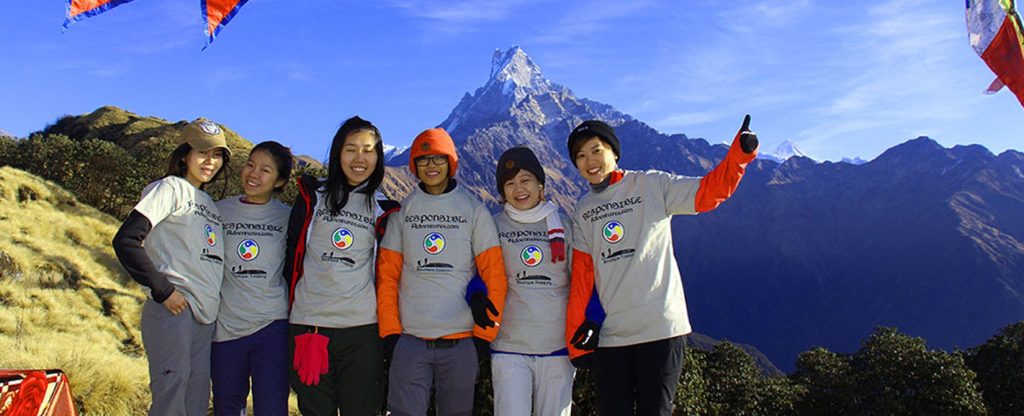
What to expect on the Mardi Himal Trek In the 80s, only a handful of trekking companies organized camping treks to this region’s expedition-style camping treks. However, as recently as 2011, some lodges have opened up at strategic points for trekkers to do lodge/teahouse trekking to Mardi Himal. The area lies east of the Annapurna base camp trekking trail. It is the right combination of walking through some villages on the famous Annapurna trail, secluded forest, open ridges, and rugged mountain terrain with Mount Machapuchhare’s (Fishtail) shadow. As a result, this trek is fast gaining popularity with trekkers both from overseas and locals. Mardi Himal Trek is an excellent alternative to the ultra-popular Poon Hill trek with fewer trekkers, gaining popularity. However, the lodges are very basic, with a similar food choice on the menu, as on the main Annapurna trail. The trails can be pretty secluded with some signboards with arrows pointing to the next destination. Here is a sample itinerary for this trek. Day 1: Pokhara to Kaande, Pothana 1900 meters, or Pitam Deurali 2300 meters. You can either get into a local vehicle or rent a private transport to drop you off at Kaande – an hour’s drive from Pokhara. From Kaande, it is a steep 2-hour ascend to the Australian camp passing through small villages at the beginning. On clear days terrific panoramic views can be expected at the Australian camp at 2100 meters. You can either stop for some drinks or have lunch here when you arrive here. If you come here early, you can hike down towards Pothana village as another option for lunch. The hike is through a forest until you reach Pothana 1900 meters. You can either stop here for the night or climb a little under an hour to reach Pitam Deurali 2300 meters. The lodges here are very basic except for one new one that was ready in spring 2016. It makes the next day’s trek to Forest camp a shorter hike. It can take as long as 7 hours from Pothana. Day 2 Pothana / Pitam Deurali to Forest Camp (Kokar) 2600 meters. It would help if you took a packed lunch and enough water to last you the whole day as there is no lodges or tea house to stop for refreshments on the forest trail. It takes around 6-7 hours from Pothana and 5-6 hours from Pitam Deurali. From Pitam Deurali, you leave the main Annapurna trail and start climbing in the Rhododendron forest. This path was the shepherds’ trail bringing their animals to higher pastures during the summer monsoon. Several trails lead to some neighbouring villages. You need to try and stick to the widest and what appears to be the most trodden trail (this can be tricky if you are there early post-monsoon), which is again a good idea to trek with other trekkers or book your trip with a trekking company for safety. You will be walking on the ridge of the forest, with some ascends, mostly with occasional descends. You can stop at one of the several openings to have your packed lunch. There are only three lodges at the Forest camp. It is in a beautiful setting, as the name implies, in the middle of a forest. Day 3 Forest Camp / Kokar to Low Camp 2950 meters or further on to Badal Danda 3250 meters. The trail continues to climb gradually in the Rhododendron forest. You will reach Low camp in about 3 hours. It is an opening in the woods with three lodges. Some trekkers stay here for the night or continue to Badal Danda or high camp. You can have lunch here and go on for another hour of an uphill climb to Badal Danda, be informed that there is only a single lodge with six rooms. If you manage to get a place, Badal danda is above the tree line, and on clear days, spectacular views of Machapuchare, Mardi Himal, and Annapurna South can be seen. There is a point above the lodge on the left for spectacular views in the morning for sunset or sunrise the following day. Badal Danda to High Camp 3550 meters. The trail is on a ridge of the hill with small shrubs above the tree line, with Annapurna South, Machapuchare, and Mardi Himal dominating the North’s skyline, a broad valley to the east. Finally, one can see the trekking trail to Annapurna base camp about a thousand meters below the West. High camp is a small open pasture with three lodges. Mardi Base Camp 4500 meters. The trail is narrow and exposed at some parts with sheer drops. You need to be very careful at those points; forget about going higher if you are there in winter and snow. You will reach an area with a sign that says MBC in two hours, it should be good enough to arrive here, but the “proper “Basecamp is a further 2 hours away. Remember, you must walk back the same way to High camp. The views are fantastic even at just an hour’s walk from the high camp. Forest Camp 2600m Retrace your steps back to Forest Camp. You will find it a fascinating hike downhill with more oxygen to appreciate the scenery better. The total walk is about 5-6 hours. Forest Camp to Lwang Ghalel 1500 meters. The trail descends steeply through rhododendron and Oak forest to the permanent settlements closer to the valley basin. From this point, the trail contours and is undulating. Lwang is a Gurung village with a rich culture and traditions. There are homestays in this village that provide you with an excellent opportunity to experience the Gurung Clan village lifestyle. The Mother’s group will make you a traditional Nepali staple of Dal Bhat (rice, lentils, vegetable curry, spicy sauce, and maybe even chicken curry) with fresh organic ingredients. If you are in a small group, you can also ask for a cultural evening for a small donation.
What to expect when trekking on the Manaslu Circuit

What to expect when trekking on the Manaslu Circuit Mount Manaslu is the eighth tallest mountain in the world at 8156 meters. The local name for Manaslu is Kutang – Spirit Mountain. The government of Nepal only opened this area to trekkers in 1991. For more details on the Manaslu area, you can visit Wikipedia. In recent years, Mount Manaslu Circuit trekking has been gaining popularity rapidly. Unfortunately, part of the Manaslu region’s trails was damaged by the massive earthquakes of April and May 2015. To date, only bona fide trekking agencies of Nepal are permitted to run trekking tours around Manaslu. Backpackers are forbidden to roam alone in this region. You can start this trek by taking a local bus/jeep or a private jeep to Arughat or driving for an additional hour or so to Soti Khola to begin the trek. The trail starts with narrow valleys with tropical vegetation while hiking along the Budi Gandaki River. Parts of the path are small, with loose rocks used as steps, and several places can be potentially dangerous, especially when you encounter passing caravans of mules. As you begin to gain altitude, you will notice the change in the landscape becomes austere, and at the same time, the people who were Hindus in the lower valleys now see Buddhists in the higher altitudes. You will pass through Machi Khola, Jagat, Ghap, Lho Gaun, and Samagaon with impressive views of Manaslu, Ganesh Himal, and other smaller peaks of 6000 meters. It is recommended that you spend one extra night at Samagaon for acclimatization. The average hiking days are between 5-7 hours each day. On average, it takes about six days to reach Samagaon from the day you leave Kathmandu. On an extra day, you can hike up towards Manaslu Base Camp. After climbing through the pine forest, you will see the impressive turquoise Birendra Tal (Lake). The hike to Manaslu Base Camp takes between 5-6 hours, and another 3-4 hours to get back to Samagaon – it is not recommended unless you have brought your tent and some camping food for one night. However, it is good enough for acclimatization if you walk about two hours from Samagaon, enjoy your packed lunch amidst stunning scenery and head back to Samagaon. The other option is to hike to Pun Gyen Gompa – ask the locals for directions; the round trip takes about 6 hours. You will pass through yak pastures and a grassy plateau with dramatic mountain scenery. There is a small monastery with a little prayer room with dormitories for the monks. It is only worth the effort on clear days. You can also camp here if you have brought your tent and some camping food, as no accommodation is available here. Samagaon and onwards. The trail from Samagaon to Samdo is flattish and takes about 4 – 5 hours to get there. From Samdo, the path to the right goes towards Tibet. You might see caravans of Yaks returning with loads from Tibet. Depending on the time of year, ask the locals if the lodge at Dharamshala is open. It is closed from the 3rd week of December until March. The next morning is another short day in Dharamshala. The trail combines gentle ascends with short bursts of steep climbs. Again, look out for Blue Sheep around Dharamshala. The lodge here is very basic, with drafty walls in the room – so a suitable sleeping bag is a must — 4-5 hours of trekking at a comfortably slow pace. The day you go over Larke La 5160 meters, you will walk alongside a glacier with a glacial Lake Cho Chanda. Upon reaching the top of the pass, you will witness a superb panoramic view of Himlung Himal 7126 meters, Cheo Himal 6820 meters, Gaygi Kung 6981 meters, and Annapurna II 7937 meters. The Larke La pass is the natural border between the Manaslu and Annapurna regions. The descent is steep and slippery to Bimthang. This is a lovely spot with beautiful views of the Manaslu range. The last day of trekking in the Manaslu route takes you through a beautiful forest, passing through terraced fields amidst a small village until you reach Dharapani, which is on the Annapurna Circuit trail. You can continue trekking onwards to do the Annapurna circuit or walk to Besisahar or get a jeep to Besishar and get into a local van or bus to Kathmandu or have a vehicle booked from Kathmandu pick you up at Dharapani and bring you back to Nepal’s capital. Check out our Trekking packages for Nepal, Bhutan, India, and Tibet.










